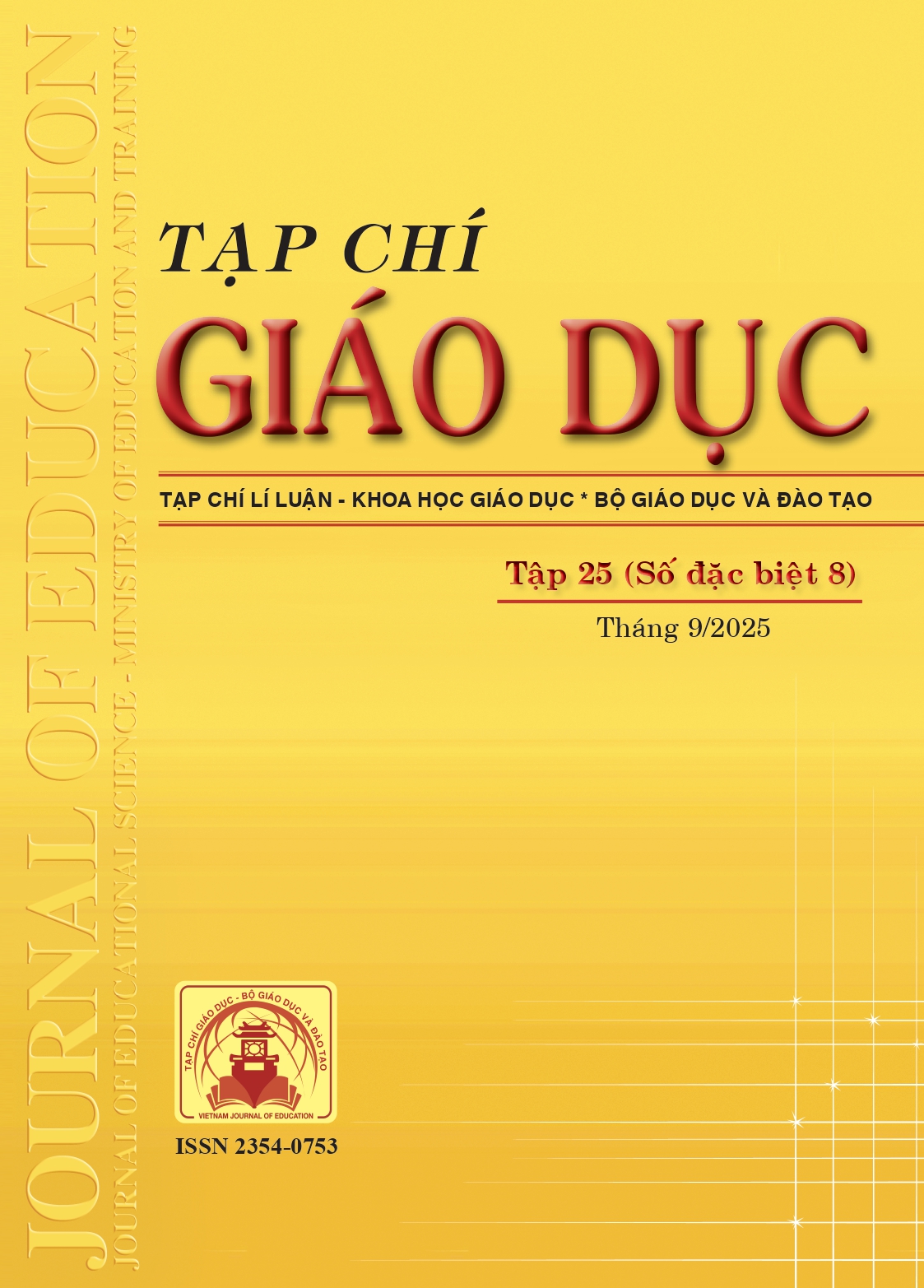Dạy học nội dung “Acetic acid” (Khoa học tự nhiên 9) theo mô hình 5E nhằm phát triển năng lực tìm hiểu tự nhiên cho học sinh
Tóm tắt
According to the 2018 General Education Program, the competence to learn about nature is one of the three components of the Natural Science ability, which needs to be formed and developed for secondary school students. The 5E model with the teaching stages: Connect, Explore, Explain, Apply and Evaluate, creates opportunities for students to actively explore knowledge through activities such as proposing problems, asking questions, building hypotheses, conducting experiments, analyzing and drawing scientific conclusions. The study analyzed the opportunity to develop the competence to learn about nature through the 5E model and illustrated this process in teaching the content of “Acetic acid” (Natural Science 9) to develop the competence to learn about nature for students. Applying the 5E model not only helps students acquire knowledge proactively but also forms scientific thinking, reasoning and problem-solving skills. This is also an approach that is consistent with the current spirit of innovation, shifting from imparting knowledge to developing qualities and competences for learners.
Tài liệu tham khảo
Bộ GD-ĐT (2018). Chương trình môn Khoa học tự nhiên (ban hành kèm theo Thông tư số 32/2018/TT-BGDĐT ngày 26/12/2018 của Bộ trưởng Bộ GD-ĐT).
Bybee, R. W., Taylor, J. A., Gardner, A., Van Scotter, P., Carlson Powell, J., Westbrook, A., & Landes, N. (2006). The BSCS 5E instructional model: Origins, effectiveness, and applications. BSCS Science Learning.
Dindar, A. C. (2012). The effect of 5E learning cycle model on eleventh grade students’ conceptual understanding of acids and bases concepts and motivation to learn chemistry [Ph.D. - Doctoral Program]. Middle East Technical University.
Demircioğlu, G., & Çağatay, G. (2014). The effect of laboratory activities based on 5E model of constructivist approach on 9th grade students’ understanding of solution chemistry. Procedia - Social and Behavioral Sciences, 116, 3120-3124. https://doi.org/10.1016/j.sbspro.2014.01.719
Dương Thị Kim Oanh, Phạm Thị Trúc Ly (2021). Tổ chức dạy học STEM theo mô hình 5E trong dạy học bài “Sự điện li của nước. PH. Chất chỉ thị axit - bazơ” (Hóa học 11). Tạp chí Giáo dục, 515, 23-28.
Fazelian, P., Naveh Ebrahim, A., & Soraghi, S. (2010). The effect of 5E instructional design model on learning and retention of sciences for middle class students. Procedia - Social and Behavioral Sciences, 5, 140-143. https://doi.org/10.1016/j.sbspro.2010.07.062
Polanin, J. R., Austin, M., Taylor, J. A., Steingut, R. R., Rodgers, M. A., & Williams, R. (2024). Effects of the 5E instructional model: A systematic review and meta-analysis. AERA Open, 10(01), 1-16. https://doi.org/10.1177/23328584241269866
Sotáková, I., & Ganajová, M. (2023). The effect of the 5E instructional model on students’ cognitive processes and their attitudes towards chemistry as a subject. Eurasia Journal of Mathematics, Science and Technology Education, 19(9), em2317. https://doi.org/10.29333/ejmste/13469
Thái Hoài Minh, Phan Nhật Nam (2023). Sử dụng thí nghiệm theo hướng khám phá trong dạy học bài “Acetic acid” - môn Khoa học tự nhiên lớp 8 nhằm phát triển năng lực tìm hiểu tự nhiên cho học sinh trung học cơ sở. Tạp chí Giáo dục, 23(số đặc biệt 8), 189-195.
Vũ Phương Liên, Trần Thị Thu Phương (2022). Dạy học phần “Hợp chất chứa nitrogen” - Hóa học 12 theo mô hình 5E nhằm phát triển năng lực tìm hiểu thế giới tự nhiên dưới góc độ Hóa học cho học sinh. Tạp chí Khoa học Giáo dục Việt Nam, 18(12), 42-48.
Đã Xuất bản
Cách trích dẫn
Số
Chuyên mục
Giấy phép

Tác phẩm này được cấp phép theo Ghi nhận tác giả của Creative Commons Giấy phép quốc tế 4.0 .












